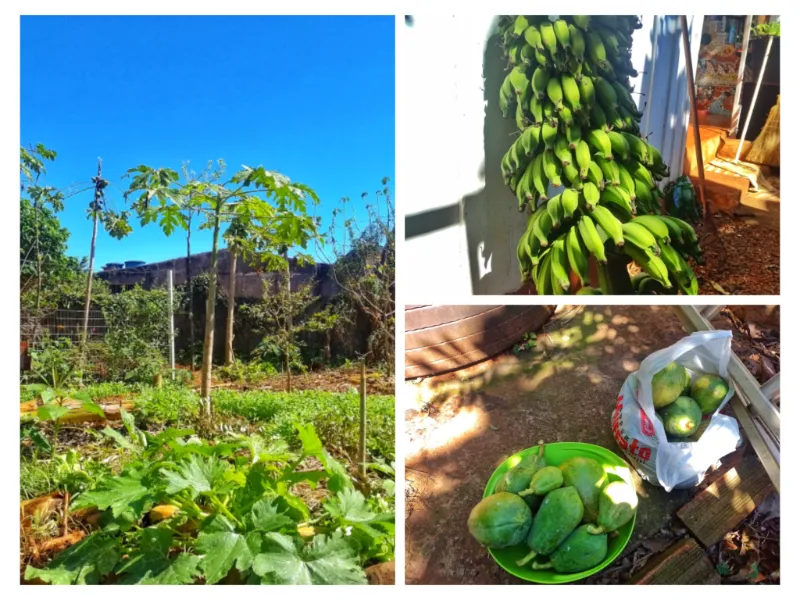
Time to appreciate a bit of the wonders of the place I'm staying at. This is a true example that you don't need a huge plot of land to have a lively ecosystem next to your house. Here, through agroforestry techniques my friend has managed to cultivate a haven of plant diversity and healthy food for him and his family.
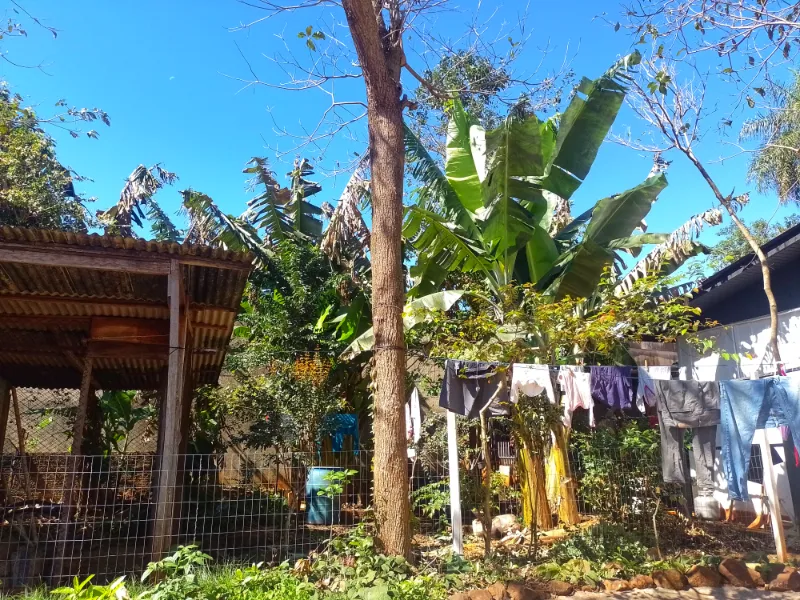
I suppose many of you are familiar with the aspect of the banana tree and it's huge leaves.

There's a lot of management technique for banana trees such as specific ways to cut off the stems and knowing how to keep the tree as healthy as it is productive. In the image you can identify the three main stages a banana tree has: daughter, mother, and grandmother.
The grandmother is the stage tha produces the fruit so what is usually done is that once the fruit has reached a desired size you harvest and cut off the entire stem, which will allow more sunlight to enter and help the minor stages prosper.
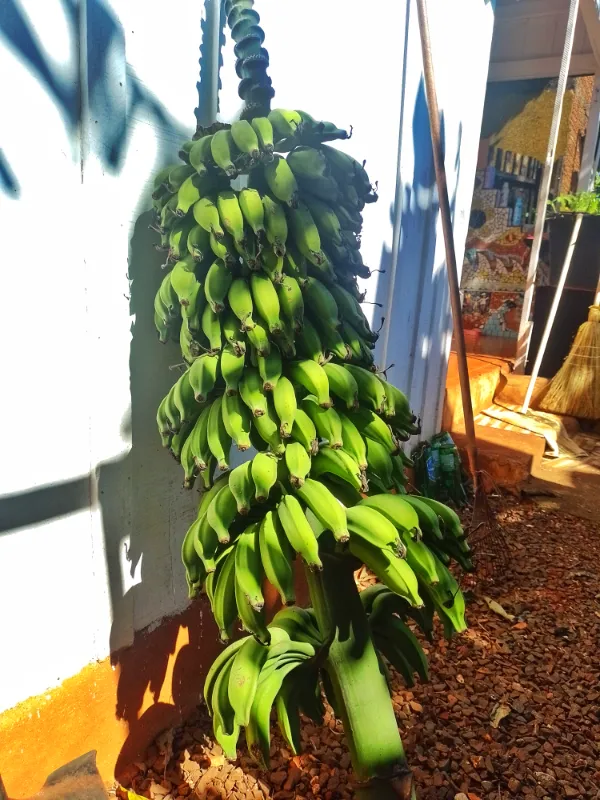
Here's yesterday's harvest befoe cutting down the grandmother. Don't feel bad though, it's just a name given by us and the tree lives on, with more energy to give to the newer parts that are growing. Besides, if not cut, the grandmother just begins to wither once the fruit has been harvested.
The harvest isn't limited to the fruit though. The stem and leaves provide a crazy amount of organic matter to protect and feed the soil. The stems will also act as a reservoir of water for the soil:
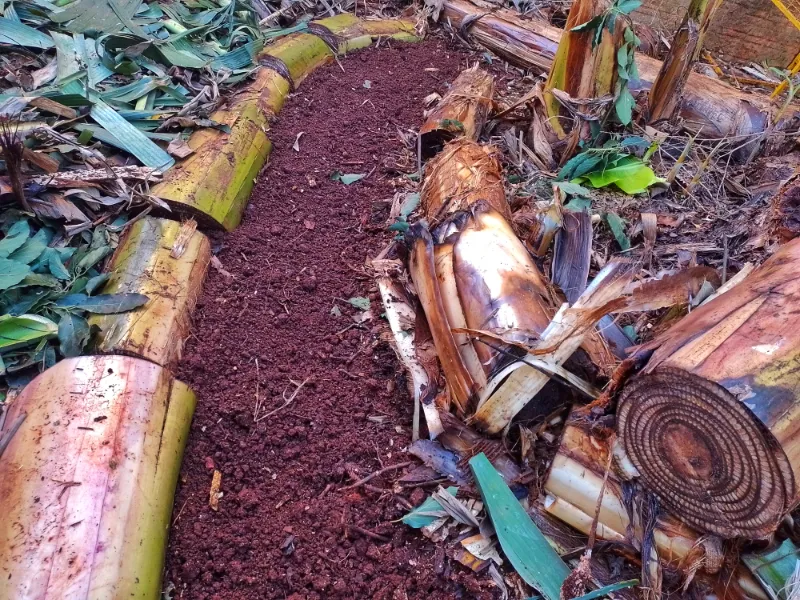
The other fruit tree that is widely cultivated in agroforestry systems is mamão, known as papaya in English and Spanish. Just like banana, it provides generous amounts of fruit year long.
It has a three year cycle where it has the best size and top productivity, after that it begins to grow too tall and reduce the amount of fruits it provides, which is why some people choose to cut it down and allow more Sun for other plants. Such decisions depend a lot on how much space you have and need.
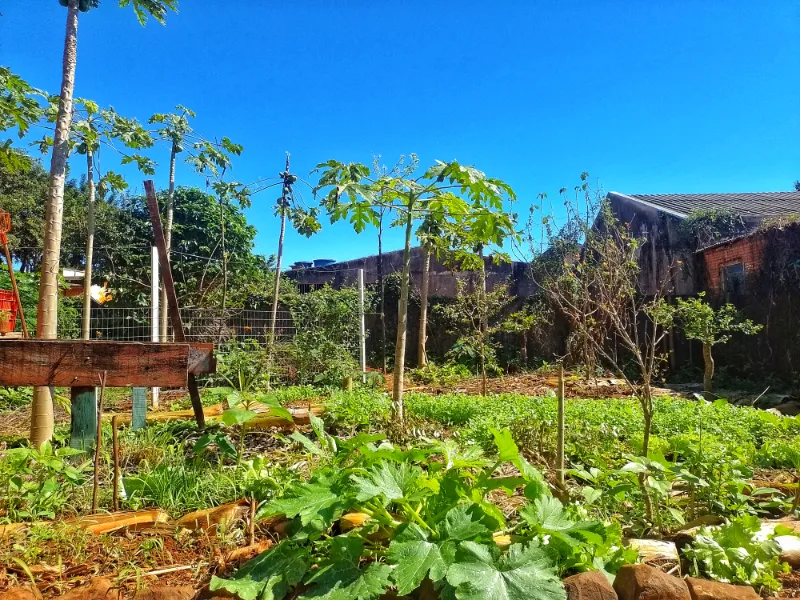
This papayas are the generous harvest from a tree that had grown too tall as it competed with an avocado tree. They were both cut as they were too close to the neighbor's roof and could eventually cause harm to the house.
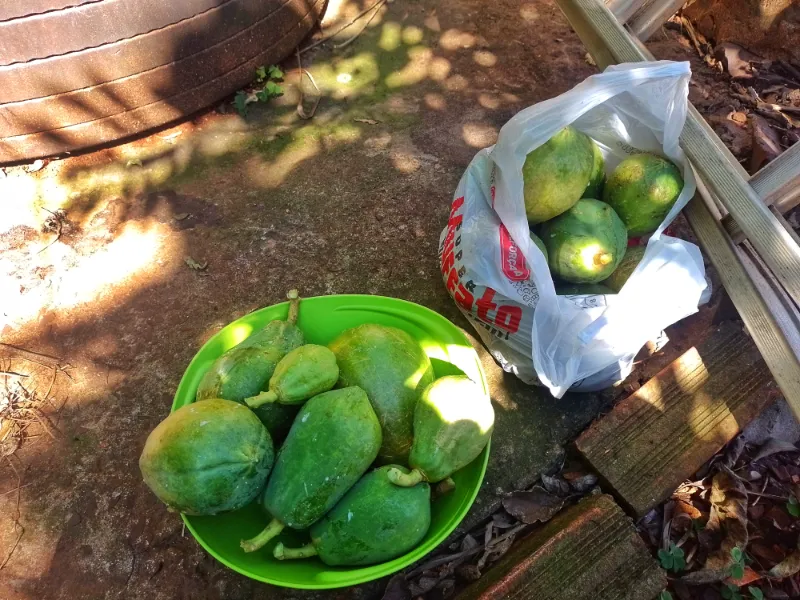
Something I really appreciate is how most of the soil is covered in abundant organic matter that is obtained from pruning the trees. In all the places I had been people stuck with the old habits of having the "clean and tidy" bare soil, yet struggled and failed to keep it moist with the intense Brasilian heat. Here the soil keeps moist and full of life, which in turn helps the plants thrive.
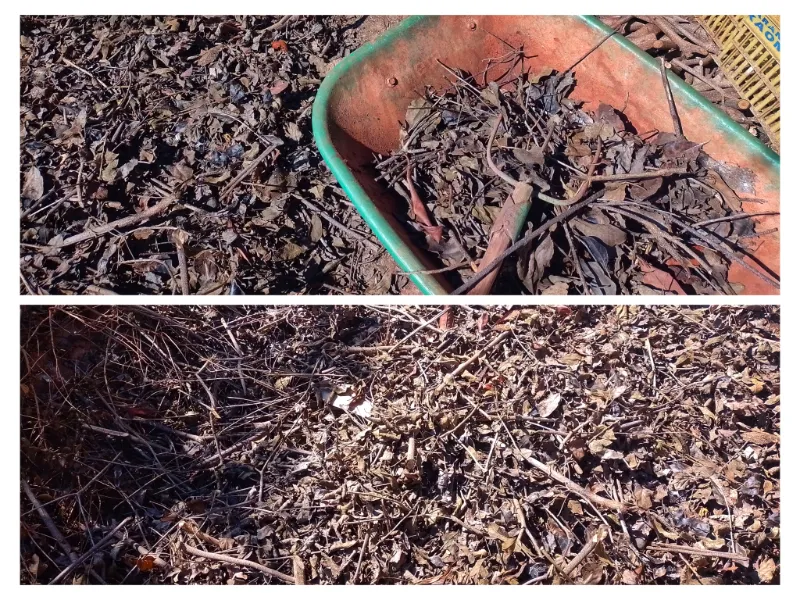
Agroforestry systems are organized in stratified segments according to the height plants can reach and their time of development. It is all thought out so that you can have a large diversity, while at the same time you get as much sunlight into the system as possible. As you can guess, the larger the plant, the further away from the Sun it is placed.
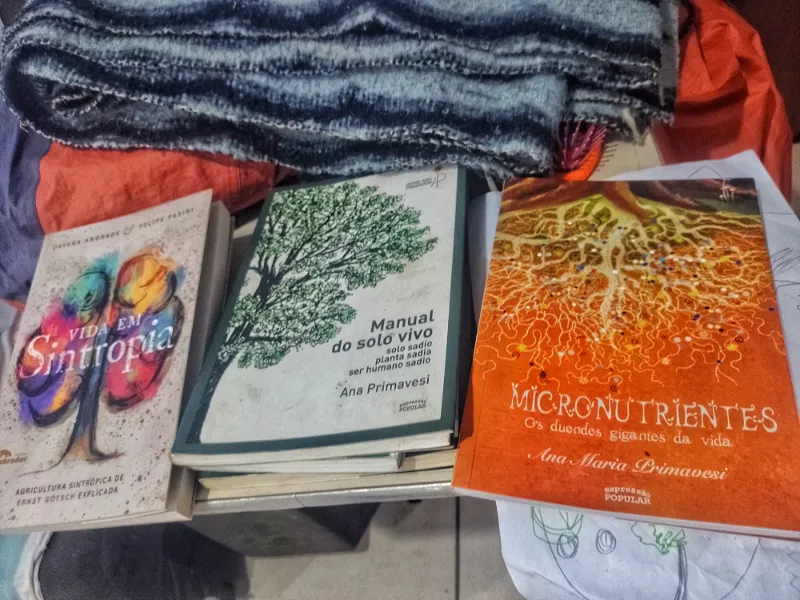
There's plenty of literature and my friend has lent me many interesting books which offer groundbreaking insights on how to develop a better relationship with Nature that both benefits the ecosystems as well as it can feed us abundantly.